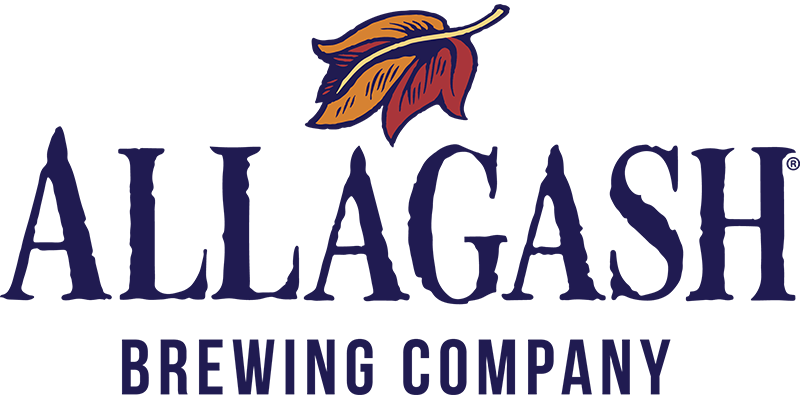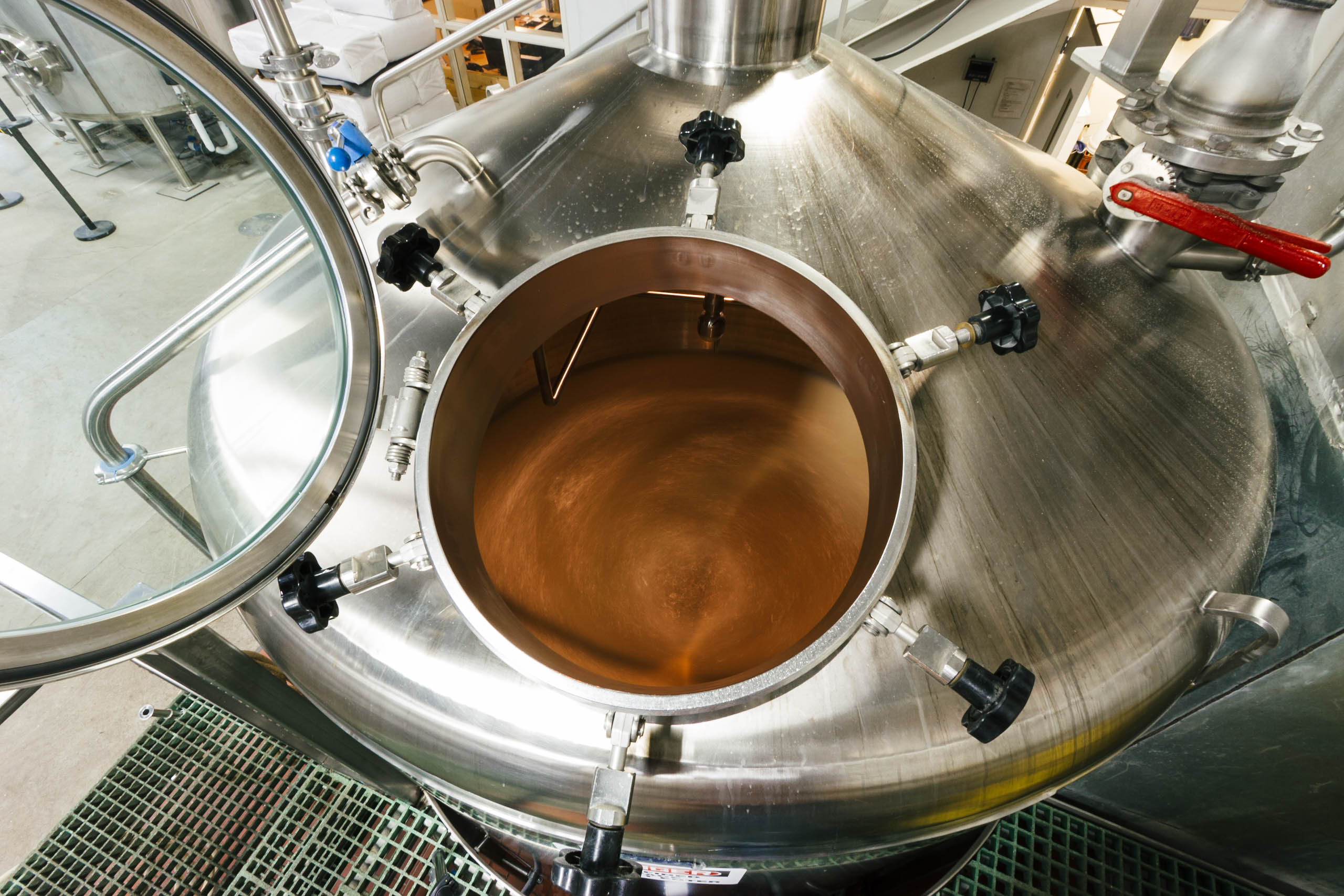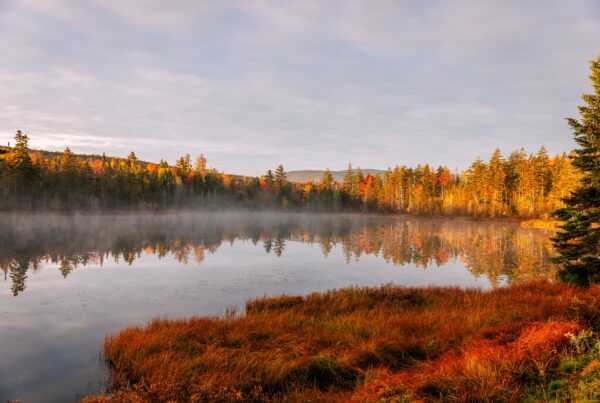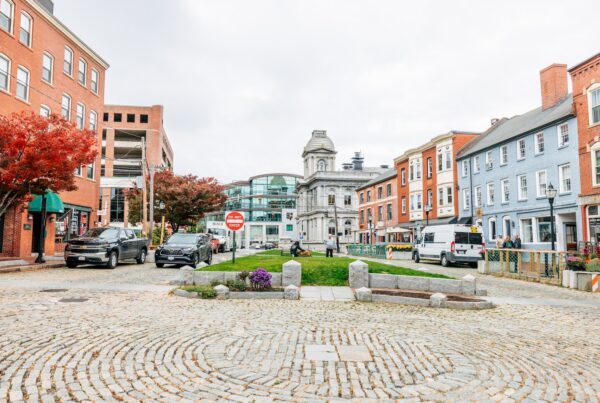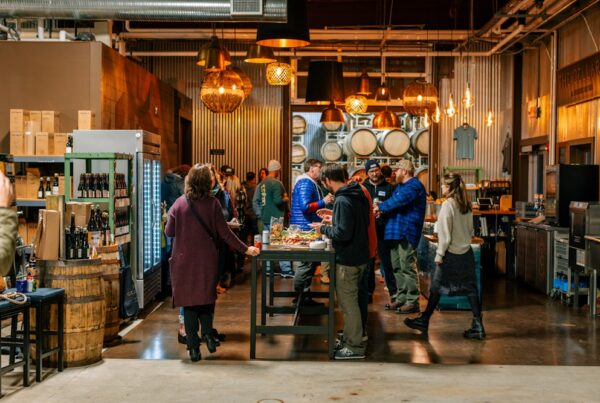Normally, when brewing pretty much any style of beer, there are a couple things you want: clear, pure wort, fresh hops, and a well-behaved strain of yeast. Brewing spontaneously fermented beer turns those three requirements on their heads.
What’s a Turbid Mash?
First, you have the brew. Typical brews aim to gently break up the sugars in grain to create a nice, simple food source for the yeast to feast on in the fermentation tanks. In brewing spontaneous beers, the goal is to abuse the heck out of the grain—this process is called a “turbid mash.” The mash is mixed violently until it basically looks like a well-shaken latte. This breaks apart the grains, extracting tannins, starches, and polyphenols—which goes about as directly against textbook brewing as you can get. Spontaneously fermented beers, however, ferment over the course of years—rather than the weeks it takes most other styles—so the brewer needs all those starches, etc. to create a complex enough source of food to keep the yeast and bacteria satiated for their long stay in oak.
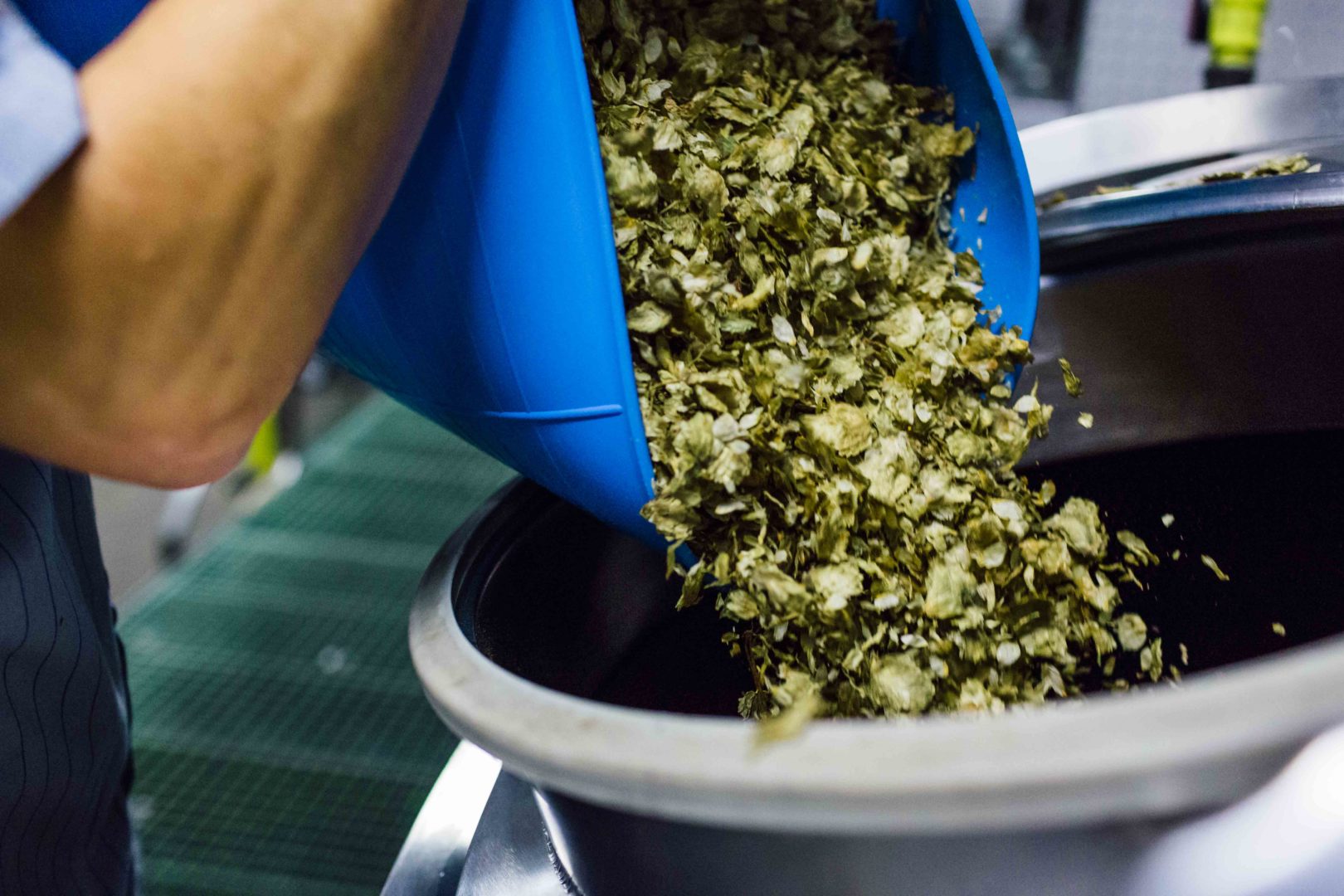
You’re looking at aged hops.
A particular type of hop
Next, we have the hops. The hops that went into this year’s batch of coolship were picked fresh four years ago. By any brewer’s terms that’s pretty old. We do this because, in the traditional style of brewing spontaneously fermented beers, you want almost zero bitterness. And a hop’s bitter flavor, for the most part, resides in Alpha Acids which dissipate from the cones over time. After four years of aging, our hops not only smell similar to old cheese (an odor that mercifully dissipates during the brew), but help to preserve the beer during fermentation without adding any hoppy bitterness. It’s also worth mentioning that it takes around three-and-a-half hours to fully boil off those less pleasant hop aromatics—your usual boil generally lasts for a single hour.
Yeast in the Air
Last, comes the yeast. Steaming hot wort is pumped into the coolship and allowed to chill overnight. The brewer never physically adds any yeast or bacteria; microflora surfing the Maine breeze (and our brewing space) actually finds its way onto the figurative ocean of beer—as it’s sitting out in the coolship—and starts the party. This is another vital reason for the odd brewing method: making a substance that only the right kind of microflora can thrive in, not the ones that will make our beer unendurably funky. (Sidenote: The weather also plays a part in this, since outside temperature and season are critical in making sure the right kind of microflora is floating around. Sidenote to the sidenote: This is also why Lambic brewers never brew in the summer, since funky bacteria would render the resulting beers undrinkable.)
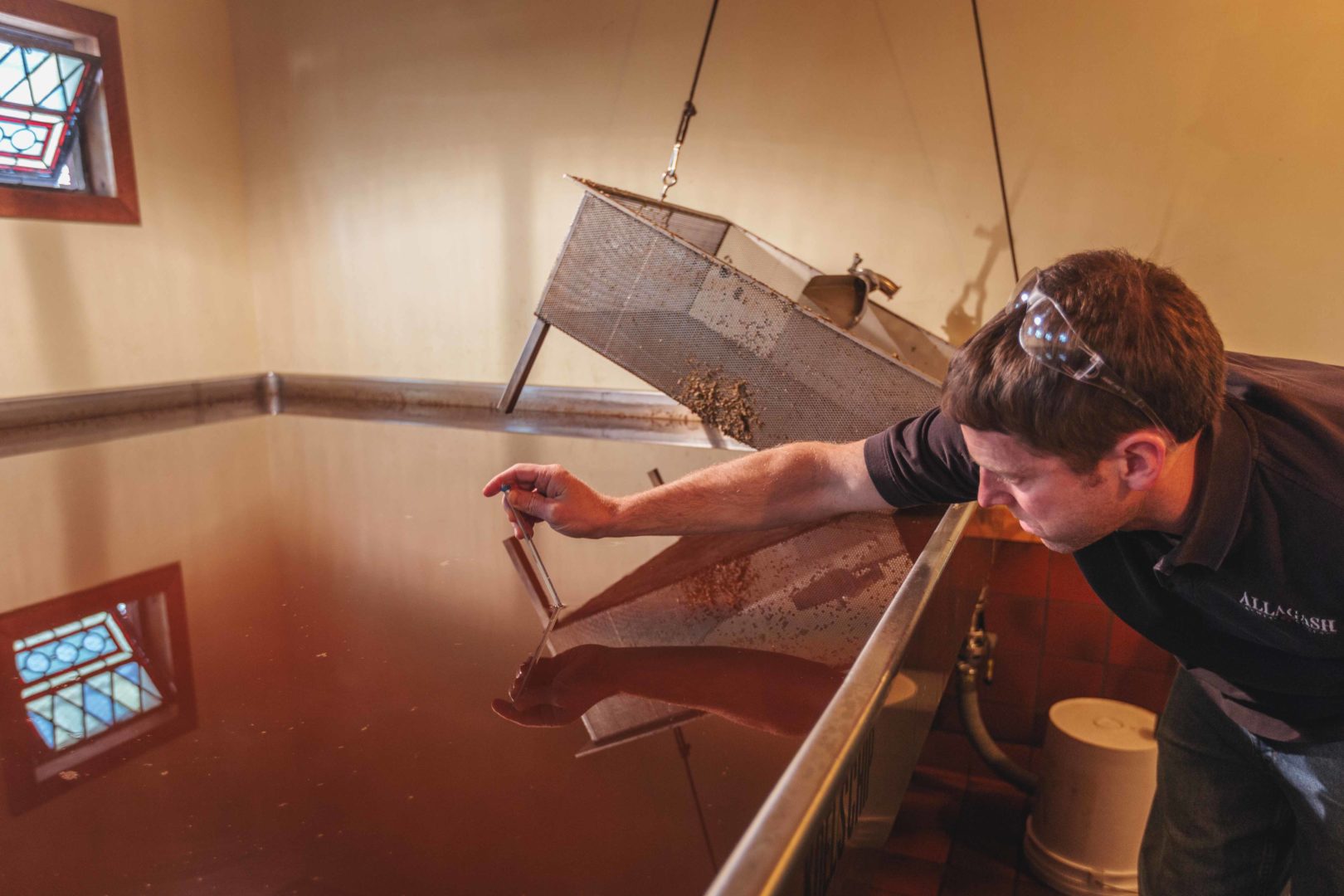
Jason, our Brewmaster, checks the wort’s temperature.
Staying out all night
In the morning, the wort goes into the interestingly named “horny tank” where it’s mixed. Before mixing, inoculation happens purely at the surface of the liquid. This holding tank is necessary to distribute the inoculant (microflora) evenly throughout the liquid, which then goes directly into barrels. The wild yeasts and bacteria will eventually convert all of the wort’s sugar into ethanol (alcohol) and sour the beer—through a process that we could fill up more than a couple posts talking about—giving spontaneously fermented beers their signature tart, dry taste.
